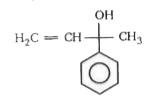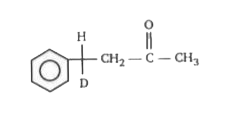Which of following boundary is capable of growth, which gradually diminishes as the cell matures?
Primary cell wall
Secondary cell wall
Tertiary cell wall
Cell membrane
The correct Answer is:A
To answer the question "Which of the following boundary is capable of growth, which gradually diminishes as the cell matures?", we will analyze the options provided and determine which boundary fits the criteria.
1. Identify the Options: The question presents several boundaries to consider, including the primary cell wall, secondary cell wall, tertiary cell wall, and cell membrane.
2. Analyze the Primary Cell Wall:
- The primary cell wall is a thin and flexible layer.
- It is capable of growth, which means it can expand as the cell grows.
- The composition of the primary cell wall includes approximately 25% cellulose, 25% hemicellulose, 35% pectins, and 8% structural proteins. As these components increase, the ability of the primary cell wall to grow is enhanced.
3. Evaluate the Secondary Cell Wall:
- The secondary cell wall forms after the primary cell wall and is thicker and more rigid.
- It primarily consists of cellulose (around 45%) and may contain lignin, but it does not grow in the same way as the primary cell wall. Instead, it provides structural support and does not expand as the cell matures.
4. Consider the Tertiary Cell Wall:
- The tertiary cell wall is often made of several layers and is typically found in specific types of plant cells.
- It is not primarily responsible for growth and does not fit the criteria of a boundary that diminishes as the cell matures.
5. Examine the Cell Membrane:
- The cell membrane (or plasma membrane) surrounds all cells and separates the interior of the cell from the external environment.
- However, the cell membrane is not capable of growth in the same sense as the primary cell wall. It maintains its structure and does not expand as the cell matures.
6. Conclusion:
- Based on the analysis, the primary cell wall is the only boundary that is capable of growth and gradually diminishes in its ability to grow as the cell matures. Therefore, the correct answer is the primary cell wall.
Final Answer:
The primary cell wall is the boundary capable of growth, which gradually diminishes as the cell matures.
- The primary cell wall is a thin and flexible layer.
- It is capable of growth, which means it can expand as the cell grows.
- The composition of the primary cell wall includes approximately 25% cellulose, 25% hemicellulose, 35% pectins, and 8% structural proteins. As these components increase, the ability of the primary cell wall to grow is enhanced.
- The secondary cell wall forms after the primary cell wall and is thicker and more rigid.
- It primarily consists of cellulose (around 45%) and may contain lignin, but it does not grow in the same way as the primary cell wall. Instead, it provides structural support and does not expand as the cell matures.
- The tertiary cell wall is often made of several layers and is typically found in specific types of plant cells.
- It is not primarily responsible for growth and does not fit the criteria of a boundary that diminishes as the cell matures.
- The cell membrane (or plasma membrane) surrounds all cells and separates the interior of the cell from the external environment.
- However, the cell membrane is not capable of growth in the same sense as the primary cell wall. It maintains its structure and does not expand as the cell matures.
- Based on the analysis, the primary cell wall is the only boundary that is capable of growth and gradually diminishes in its ability to grow as the cell matures. Therefore, the correct answer is the primary cell wall.
The primary cell wall is the boundary capable of growth, which gradually diminishes as the cell matures.
Topper's Solved these Questions
- CELL BIOLOGY (CELL STRUCTURE, FUNCTION & CELL DIVISION)BOOK - ALLENCHAPTER - CELL BIOLOGY (CELL STRUCTURE, FUNCTION & CELL DIVISION)EXERCISE - EXERCISE-1 (CYTOPLASM : MITOCHONDRIA, GOLGICOMPLEX, LYSOSOME, E.R.)
37 Videos
- CELL BIOLOGY (CELL STRUCTURE, FUNCTION & CELL DIVISION)BOOK - ALLENCHAPTER - CELL BIOLOGY (CELL STRUCTURE, FUNCTION & CELL DIVISION)EXERCISE - EXERCISE-1 (PLASTIDS, CILIA, FLAGELLA, CENTRIOLES [CENTROSOME], RIBOSOME MICROCODIES, MICROTUBULES AND MICROFILAMENTS)
30 Videos
- CELL BIOLOGY (CELL STRUCTURE, FUNCTION & CELL DIVISION)BOOK - ALLENCHAPTER - CELL BIOLOGY (CELL STRUCTURE, FUNCTION & CELL DIVISION)EXERCISE - BEGINNERS BOX-5
5 Videos
- BREATHING AND EXCHANGE OF GASESBOOK - ALLENCHAPTER - BREATHING AND EXCHANGE OF GASESEXERCISE - S
33 Videos
- CELL CYCLE AND CELL DIVISIONBOOK - ALLENCHAPTER - CELL CYCLE AND CELL DIVISIONEXERCISE - EXERCISE
61 Videos
Similar Questions
Which of the following layer of cell wall is capable of growth and gradually diminishes as the cell matures?
View SolutionThe cell wall of a young plant cell, the (A)_____is capable of growth, which gradually diminish as the cell matures and the (B)_____ is formed on the inner side of the cell.
View Solution
Knowledge Check
Which of following is in capable to show iodoform test ?
A BPh−CH=CH−OH∣CH−CH3C
BPh−CH=CH−OH∣CH−CH3C D
D
Which of the following is correct about growth?
View SolutionRead the statement carefully and choose the correct option.
A. Primary cell wall of plant cells is incapable of growth and diminishes gradually as the cell matures.
B. RER is abundantly found in the cells which are actively involved in proteins synthesis and secretion.
C. SER is a major site for lipid synthesis.
D. A number of proteins synthesized by RER are modified inside the Golgi apparatus.
View SolutionWhich of the following is capable of forming a zwitter ion ?
View SolutionWhich of the following is a plant growth inhibiter?
View SolutionWhich of the following is capable of reproducing sexually ?
View SolutionWhich one of the following is capable of carrying oxygen ?
View SolutionWhich of the following is chain growth polymer?
View Solution
